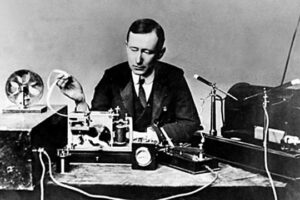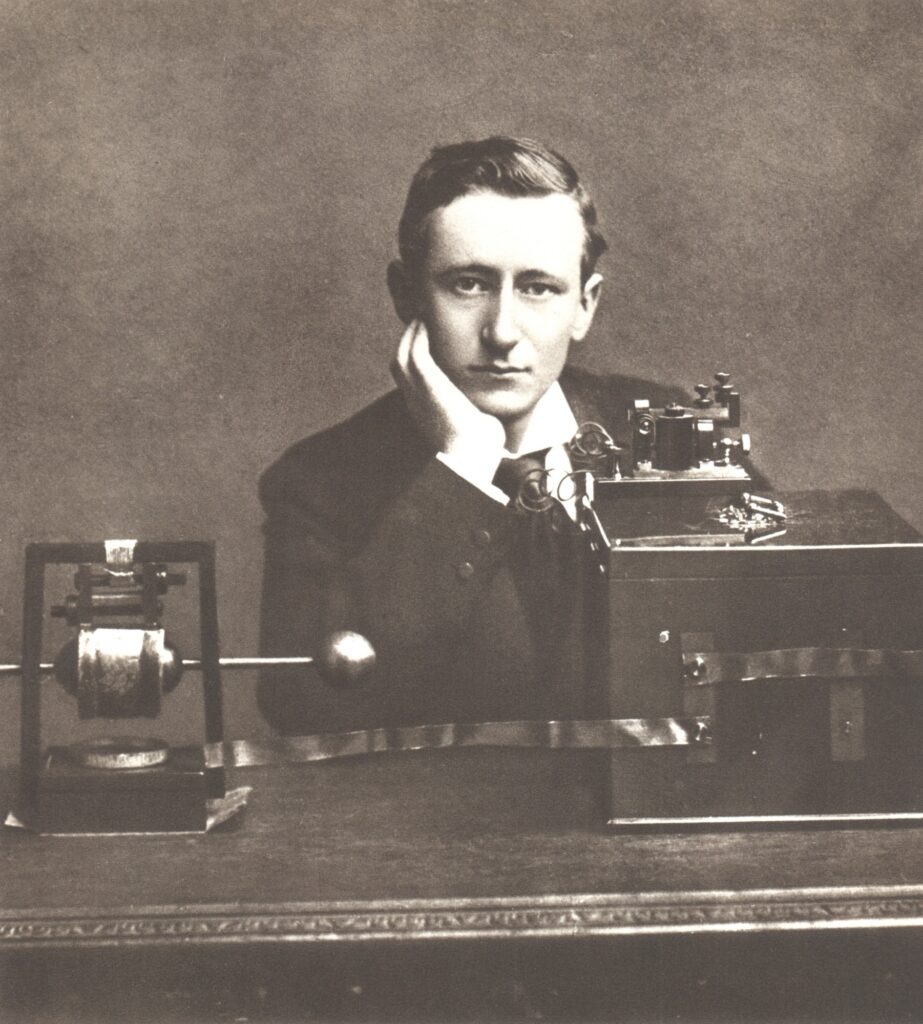
Guglielmo Marconi’s pioneering work on wireless communication done on the Isle of Wight played a crucial role in shaping the modern wireless communication era. His experiments on the island, at Alum Bay and Niton, laid the foundation for radio technology, which would go on to revolutionize global communication.
Marconi’s Arrival on the Isle of Wight
In November 1897, Marconi and his team set up the world’s first permanent wireless station at the Royal Needles Hotel, overlooking Alum Bay. This location was chosen because it provided a clear line of sight across the water, allowing Marconi to test the range and reliability of his transmissions. The first transmissions from Alum Bay were exchanged with a tugboat in the bay, then with Bournemouth (14 miles away), and later with Poole (18 miles away). These tests demonstrated the increasing range of his wireless signals, attracting worldwide attention.
Breakthroughs in Wireless Communication
One of Marconi’s most significant achievements on the Isle of Wight was the successful transmission of radio signals across the English Channel in 1899. This milestone demonstrated the feasibility of wireless communication over considerable distances, attracting worldwide attention.

The Move to Niton
As Marconi’s technology improved, he needed a location with greater range for further experiments. In 1900, he moved his operations to Knowles Farm in Niton, where he set up another wireless experimental station. This site allowed him to refine tuning technology, which was crucial for improving the reliability and precision of wireless transmissions. Other experiments demonstrated that wireless signals could travel beyond the horizon, defying conventional scientific beliefs of the time. These breakthroughs were crucial in his quest to send signals across the Atlantic.
Maritime application
Marconi’s technology was quickly adopted for maritime communication, improving safety at sea by enabling ships to send distress signals. This innovation proved invaluable in emergencies, including the famous case of the Titanic in 1912, where wireless telegraphy played a crucial role in summoning rescue efforts.
Legacy and Impact
The significance of Marconi’s discoveries on the Isle of Wight extends far beyond the island itself. His work laid the groundwork for modern radio, television, and even mobile communication. The principles he developed continue to underpin contemporary wireless technologies.
FAQs
Here are 10 FAQs on Marconi:
- Who was Guglielmo Marconi?
- Marconi was an Italian inventor and electrical engineer known for pioneering wireless communication and developing the first practical radio system.
- What is Marconi famous for?
He is best known for inventing the wireless telegraph, which laid the foundation for modern radio communication. - Did Marconi win a Nobel Prize?
Yes, he was awarded the Nobel Prize in Physics in 1909 for his contributions to wireless telegraphy. - How did Marconi’s invention impact the Titanic disaster?
His wireless telegraph system enabled the Titanic to send distress signals, leading to the rescue of over 700 passengers. - Where was Marconi born?
He was born in Bologna, Italy, in 1874. - Did Marconi have formal education in science?
Surprisingly, he did not attend formal schooling but was privately tutored in physics and engineering. - What was Marconi’s first major achievement?
In 1897, he successfully transmitted wireless signals over long distances, proving that communication without wires was possible. - Did Marconi face skepticism about his work?
Yes, early on, some officials dismissed his ideas, even suggesting he should be sent to an asylum. - What was Marconi’s role in global communication?
His work revolutionized communication, making long-distance wireless messaging possible and paving the way for radio and television broadcasting. - How is Marconi remembered today?
His legacy lives on through the Marconi Company, various scientific awards, and the continued use of radio technology worldwide.
Accommodation
You can visit the sites on the Island where this pioneering work took place by staying in our accommodation in Ventnor: the 5 bedroom historic Bermuda House, The cosy 4 bedroom Gills Cliff House, our Beach View Apartment with its stunning view (and 2 bedrooms) and our 1 bedroom High Street Suites 3.



Leave a Reply